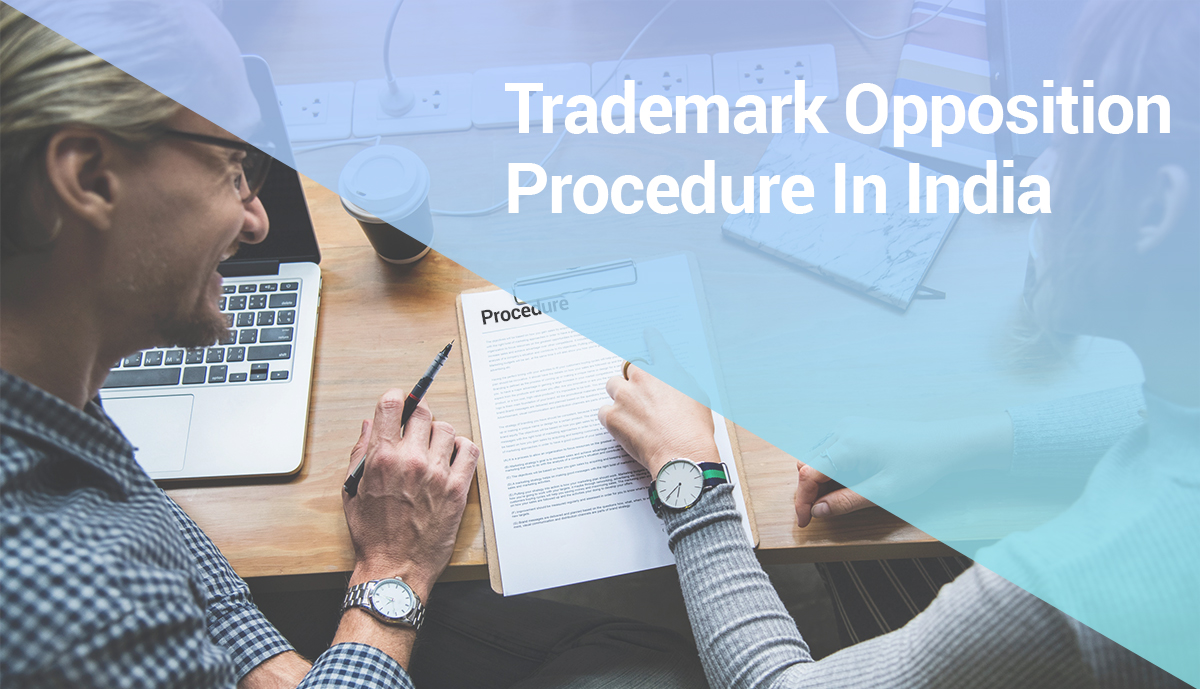Opposition to Trademark Registration – Trademark Registration in Cochin
GET A QUOTE
What is a Trademark Opposition?
After the examiner reviews your trademark application and finds that it qualifies for registration, your trademark are going to be printed within the official Journal of Trademark Registry. The aim behind publication a Trademark within the Journal is to alter any third party to look at the trademark and file a trademark opposition against it. Simply put, a trademark opposition is filed by a third-party against the registration of your Trademark.
When associate degree opponent files associate degree opposition, your trademark standing can replicate as ‘Opposed’.
What is the limit for filing associate degree Opposition?
The third party should file the trademark opposition among three months (extendable by one month) from the date of publication of the trademark.
Who will file a Trademark Opposition?
Statutorily, Section 21 of the Trademarks Act, 1999 states that ‘any person’ will file the notice of opposition. This includes people, companies, partnership corporations and trusts. In fact, if two or more persons have identical problems against a trademark, they will be joined along as opponents.
Notice of Opposition
1) A notice of opposition to the registration of a trademark under sub-section (1) of section 21, with such particulars as specified in Rule 43, shall be filed in Form TM-O within four months from the date of publication of the trademark journal in which the application for registration of the trademark was advertised or re-advertised.
(2) Where a notice of opposition has been filed in respect of a single application for the registration of a trademark for different classes of goods and services, it shall bear the fee in respect of each class in relation to which the opposition is filed.
(3) Where an opposition is filed only for a particular class or classes in respect of a single application made under sub-section (2) of section 18, the application for remaining class or classes shall not proceed to trademark registration until a request in Form TM-M for division of the application together with the divisional fee is made by the applicant.
(4) Where in respect of a single application for the registration of a trademark no notice of opposition is filed in a class or classes, the application in respect of such class or classes shall, subject to section 19 and sub-section (1) of section 23, proceed to registration after the division of the application in the class or classes in respect of which an opposition is pending.
(5) A copy of notice of opposition shall be ordinarily served by the Registrar to the applicants within three months of the receipt of the same by the appropriate office:
Provided that where the applicant has already filed the counter statement on the basis of the copy of notice of opposition made available in the electronic records on the official website, the requirement of service of copy of the notice of opposition to the applicant shall be dispensed with.
Requirements of Notice of Opposition
(1) A notice of opposition shall contain.-
a) in respect of an application against which opposition is entered-
i) The application number against which opposition is entered;
ii) An indication of the goods or services listed in the trademark application against which opposition is entered; and
iii) The name of the applicant for the trademark.
b) In respect of the earlier trademark or the earlier right on which the opposition is based.-
i) Where the opposition is based on an earlier trademark, a statement to that effect and an indication of the status of earlier trademark:
ii) Where available, the application number or trademark registration number and the filing date, including the priority date of the earlier trademark,
iii) Where the opposition is based on an earlier trademark which is alleged to be a well-known trademark within the meaning of sub-section 2 of section 11, an indication to that effect and an indication of the country or countries in which the earlier trademark is recognized to be well known:
iv) Where the opposition is based on an earlier trademark having a reputation within the meaning of paragraph (b) of sub-clause (2) of section 11 of the Act, an indication to that effect and an indication of whether the earlier trademark is registered or applied for:
v) A representation of the trademark of the opponent and where appropriate, a description of the trademark or earlier right; and
vi) Where the goods or services in respect of which earlier trademark has been registered or applied for or in respect of which the earlier trademark is well known within the meaning of sub-section (2) of section 11 or has a reputation within the meaning of that section, the opponent shall when indicating all the goods or services for which the earlier trademark is protected, also indicate those goods or services on which the opposition is based.
c) in respect of the opposing party-
i) Where the opposition is entered by the proprietor of the earlier trademark or of the earlier right, his name and address and an indication that he is the proprietor of such trademark or right:
ii) Where opposition is entered by a licensee not being a registered user, the name of the licensee and his address and an indication that he has been authorized to enter the opposition;
iii) Where the opposition is entered by the successor in title to the registered proprietor of a trademark who has not yet been registered as new proprietor, an indication to that effect, the name and address of the opposing party and an indication of the date on which the application for registration of the new proprietor was received by the appropriate office or, where this information is not available, was sent to the appropriate office; and
iv) Where the opposing party has no place of business in India, the name of the opponents and his address for service in India.
d) The grounds on which the opposition is based.
2) A notice of opposition shall be verified at the foot by the opponent or by his duly authorized agent.
3) The person verifying shall state specifically by reference to the numbered paragraphs of the notice of opposition, what he verifies of his own knowledge and what he verifies upon information received and believed to be true.
4) The verification shall be signed by the person making it and shall state the date on which and the place at which it was signed.
Counter-statement
1) The counter-statement required by sub-section (2) of section 21 shall be sent on Form TM O within two months from the receipt by the applicant of the copy of the notice of opposition from the Registrar and shall set out what facts, if any, alleged in the notice of opposition of trademark registration, are admitted by the applicant. A copy of the counter statement shall be ordinarily served by the Registrar to the opponent within two months from the date of receipt of the same.
2) The counter-statement shall be verified in the manner as provided in sub-rules (2), (3) and (4) of rule 43.
Evidence in support of opposition
1) Within two months from service of a copy of the counter-statement, the opponent shall either leave with the Registrar, such evidence by way of affidavit as he may desire to adduce in support of his opposition for trademark registration or shall intimate to the Registrar and to the applicant in writing that he does not desire to adduce evidence in support of his opposition but intends to rely on the facts stated in the notice of opposition. He shall deliver to the applicant copies of any evidence including exhibits, if any, that he leaves with the Registrar under this sub-rule and intimate the Registrar in writing of such delivery.
2) If an opponent takes no action under sub-rule (1) within the time deemed to have abandoned his opposition.
Evidence in support of application
1) Within two months on the receipt by the applicant of the copies of affidavits in support of opposition or of the intimation that the opponent does not desire to adduce any evidence in support of his opposition, the applicant shall leave with the Registrar such evidence by way of affidavit as he desires to adduce in support of his application and shall deliver to the opponent copies thereof or shall intimate to the Registrar and the opponent that he does not desire to adduce any evidence but intends to rely on the facts stated in the counter-statement and or on the evidence already left by him in connection with the application in question. In case the applicant adduces any evidence or relies on any evidence already left by him in connection with the application, he shall deliver to the opponent copies of the same, including exhibits, if any, and shall intimate the Registrar in writing of such delivery.
2) If an applicant takes no action under sub-rule (1) within the time mentioned therein, he shall be deemed to have abandoned his application.
Evidence in reply by opponent
Within one month from the receipt by the opponent of the copies of the applicant’s affidavit the opponent may leave with the Registrar evidence by affidavit in reply and shall deliver to the applicant copies of the same including exhibits, if any, and shall intimate in Registrar in writing of such delivery.
Further evidence
No further evidence shall be left on either side, but in any proceedings before the Registrar, he may at any time, if he thinks fit, give leave to either the applicant or the opponent to leave any evidence upon such terms as to costs or otherwise as he may think fit.
Translation of documents
Where a document is in a language other than Hindi or English and is referred to in the notice of opposition, counter-statement or an affidavit filed in an opposition proceeding for trademark registration, an attested translation thereof in Hindi or English shall be submitted before the registrar and a copy thereof shall be provided to opposite party.
Hearing and decision
1) The Registrar, after the closure of the evidence, shall give notice to the parties of the first date of hearing. The date of hearing shall be for a date at least one month after the date of the first notice.
2) A party to a proceeding may make a request for adjournment of the hearing with reasonable cause in Form TM-M accompanied by the prescribed fee, at least three days before the date of hearing and the Registrar, if he thinks fit to do so, and upon such terms as he may direct, may adjourn the hearing and intimate the parties accordingly:
Provided that no party shall be given more than two adjournments and each adjournment shall not be for more than thirty days.
3) If the applicant is not present at the adjourned date of hearing and at the time mentioned in the notice, the application may be treated as abandoned.
4) If the opponent is not present at the adjourned date of hearing and at time mentioned in the notice, the opposition may be dismissed for want of prosecution and the application may proceed to registration subject to section 19.
5) The Registrar shall consider written arguments if submitted by a party to the proceeding.
6) The decision of the Registrar shall be communicated to the parties in writing at the address given for service.
Security for costs
The security for costs which the Registrar may require under sub-section (6) of section 21 may be fixed at any amount which he may consider proper, and such amount may be further enhanced by him at any stage in the opposition proceedings.

